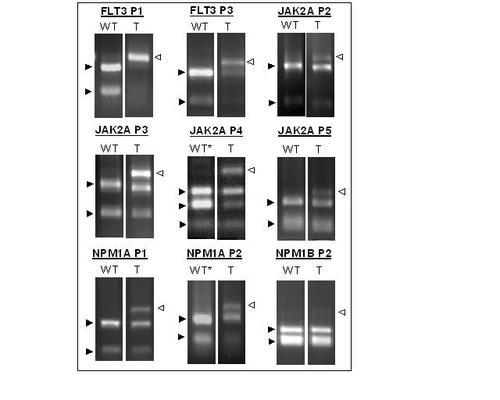- Title
-
High Efficiency In Vivo Genome Engineering with a Simplified 15-RVD GoldyTALEN Design
- Authors
- Ma, A.C., Lee, H.B., Clark, K.J., and Ekker, S.C.
- Source
- Full text @ PLoS One
|
In vivo activity of 15-RVD GoldyTALENs. (A) In vivo activity (% of chromosome conversion at somatic level) of 15-RVD TALEN pairs. Results shown were averages of 3 separate experiments analyzing groups of 10 embryos. Error bars represent the standard error of the means. (B) Representative results of RFLP screening assay after injection of IDH1 P1 and GFP(GM2) P1. Open arrowheads indicate bands from completely digested WT PCR product and closed arrowheads represent uncut PCR product with small indels. *Marks single embryos with bi-allelic conversion. |
|
Importance of the spacer length and the 52 T nucleotide in GoldyTALEN activity. (A) Modifications of NPMB1 P1 to LS and RS for longer spacers. (B) Both modified NPMBP1 TALEN pairs (NPM1B P1 LS and RS) showed significant increase in in vivo activity compared with the original shorter spacer design. (C) Modifications of IDH1 P1 and JAK2A P1 to remove the 52 upstream T nucleotide at one of the TALEN arms. (D) Both modified TALEN pairs (IDH1 P1 RM and JAK2A P1 LM) showed significant reduction in in vivo activity compared with the original designs. Open arrowheads indicate bands from completely digested WT PCR product and closed arrowheads represent uncut PCR product with small indels. WT: wild-type; T: TALEN pair injected. Representative and average results of RFLP screening in 3 separate experiments analyzing group of 10 embryos are shown in the gel photo and graph, respectively. Error bars represent the standard error of the means. |
|
In vivo activity of 15-RVD GoldyTALENs. Representative results of RFLP screening assay of all other 15-RVD GoldyTALENs tested. Open arrow heads indicate bands from completely digested WT PCR product and closed arrowheads represent uncut PCR product with small indels. *An extra restriction site appears in PCR product outside the spacer resulted in a 3 bands pattern in WT embryos. |



